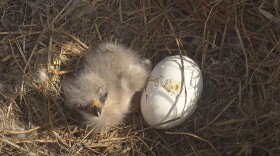A recent study uses six decades of red tide data along Florida's west coast to compare the strength of the algal blooms over the years, creating a Bloom Severity Index.
National and regional scientists reviewed cell counts of the organism that causes red tide, Karenia brevis, between 1953 and 2019, along with respiratory irritation reports starting in 2006.

The paper recently published in the peer-review journal PLOS One, shows that red tide blooms most frequently occur from Sanibel Island to Tampa Bay between September and January, typically forming in August and continue through the winter, with October and November being the months most frequently impacted.
“Red tide blooms are described as hitting Southwest Florida nine of every 10 years,” said the study’s lead author Richard Stumpf, oceanographer with NOAA-NCCOS in a press release.
“But not all blooms are created equal. Some last longer, some cause more respiratory irritation. Others affect a smaller area or produce less irritation. In trying to protect public health and local economies, we found that we really needed a better way to gauge blooms and how much of a threat they pose.”
Scientists from the National Oceanic and Atmospheric Administration’s National Centers for Coastal Ocean Science, Gulf of Mexico Coastal Ocean Observing System, Texas A&M University and the Florida Fish and Wildlife Conservation Commission-Fish and Wildlife Research Institute contributed to the study.
They found the most extensive red tide along the Southwest Florida coast occurred in 2018. Also that year, the Respiratory Irritation Index in Manatee and Sarasota counties was the highest on record.
Research shows that wind direction matters for the amount of respiratory irritation. For example, years with severe blooms, like 2006, 2012 and 2018, caused noticeable respiratory irritation, while other years with blooms, like 2008, 2009, 2011, 2013, 2014, had almost no respiratory impacts because of more frequent than usual offshore winds.

Kate Hubbard, a research scientist at the Fish and Wildlife Research Institute, who co-authored the study, said this research emphasizes that the cycles and severity of blooms change. And understanding that better will help to answer the question of whether or not blooms are getting worse.
“So, I don't have a definitive answer, but I think that it's a really useful step forward, because there are so many different ways to describe severity," she said. "And this effort kind of tackles that and says that this is how we're going to define it here."
Barbara Kirkpatrick, senior advisor for GCOOS and fellow co-author, said she thinks the blooms are lasting longer and that climate change may exacerbate it.
“What we think, is yes, that these blooms are lasting longer… Karenia brevis is a very old organism was around with the dinosaurs, so it's probably going to do just fine with climate change and potentially outcompete other critters in the water, which would potentially cause more blooms. I know people don't want to hear that, but it's the truth,” she said.
“What we know for sure is that the more people who come to our coastline and populate our coastline, the more people are being impacted by these blooms.”

However, Kirkpatrick said it’s actually really hard to find solid trends within red tide data.
“Our detection methods keep getting better all the time. And why that’s sort of … bad news is just because we don't have the same data set for, say, 30, 40, 50 years," she said. "The techniques have changed, and that makes it really hard to compare from decade to decade.”
Kirkpatrick said the scientists will soon look into the 2021 red tide blooms that affected Southwest Florida’s coast — including Tampa Bay — for months within the context of this study’s findings. And they eventually hope to use the indexes to help predict and prepare for future blooms.
“With these new indices, not only can we look historically at blooms using objective standards, we can also apply the index to current blooms to give the public a better idea of risk — similar to the way that the National Weather Service has developed the Heat Index, the Climate Extreme Index and other indices,” said Richard Stumpf of NOAA-NCCOS in a press release.
Copyright 2022 WUSF Public Media - WUSF 89.7. To see more, visit WUSF Public Media - WUSF 89.7. 9(MDAyMTYyMTU5MDEyOTc4NzE4ODNmYWEwYQ004))








